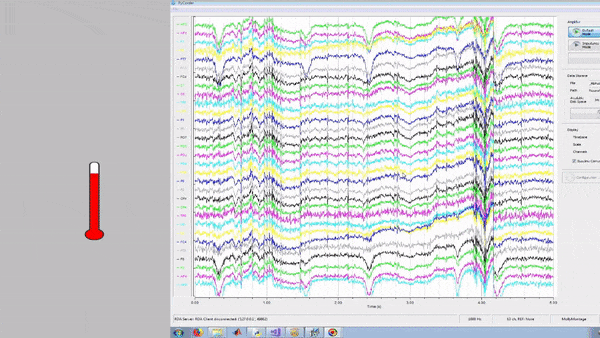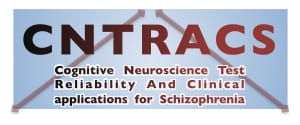
Oscillatory Biomarkers of Working Memory in Psychosis
People with psychosis have reduced working memory capacity compared to their psychiatrically healthy peers, although the brain mechanisms that give rise to this impairment remain poorly understood. In this study, we use electroencephalography (EEG) to measure event-related desynchronization (α-ERD) of the alpha frequency band, which we have identified as a potential neural mechanism by which working memory fails in people with psychosis. In our ongoing work, we are using α-ERD to identify the stage at which memory formation is disrupted in this patient population.
This work is supported by R01MH121671

Neurofeedback to Enhance Working Memory Storage
We have found that event-related desynchronization of the alpha frequency band (α-ERD) is significantly associated with working memory capacity, and that deficient α-ERD may be a mechanism by which working memory capacity is constrained in people with psychosis. In this study, we use neurofeedback to experimentally manipulate transient synchronization and desynchronization of alpha to establish a causal relationship between this neural signal and working memory storage.
This work is supported by the Brain & Behavior Research Foundation and R01MH121671
Cognitive Neurocomputational Task Reliability & Clinical Applications Consortium
The Cognitive Neurocomputational Task Reliability & Clinical Applications Consortium represents an expansion upon original work from the Cognitive Neuroscience Research to Improve Cognition in Schizophrenia (CNTRICS) and subsequent Cognitive Neuroscience Task Reliability & Clinical Applications (CNTRACS) initiatives. Using computational modeling, we aim to isolate contributions of multiple specific, cognitive mechanisms that (a) are more closely aligned with neural processes than standard behavioral performance metrics, (b) demonstrate good test-retest reliability, and (c) can be used as biomarkers for treatment development, longitudinal studies, and genetic studies.
This work is supported by R01MH084828


